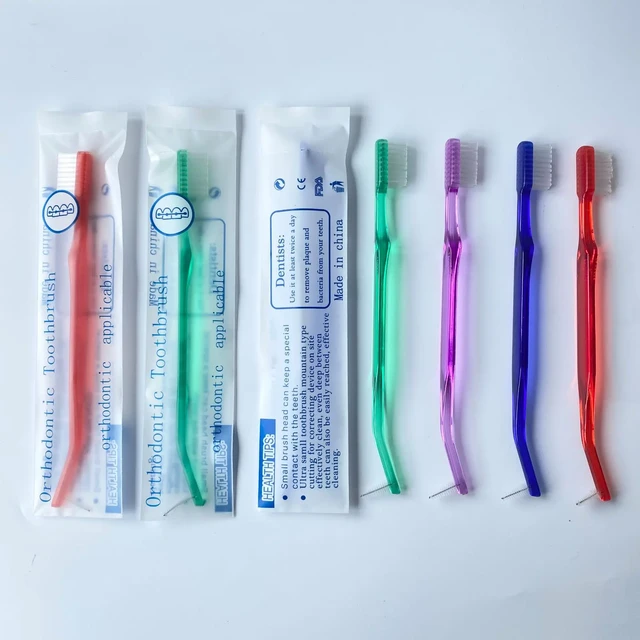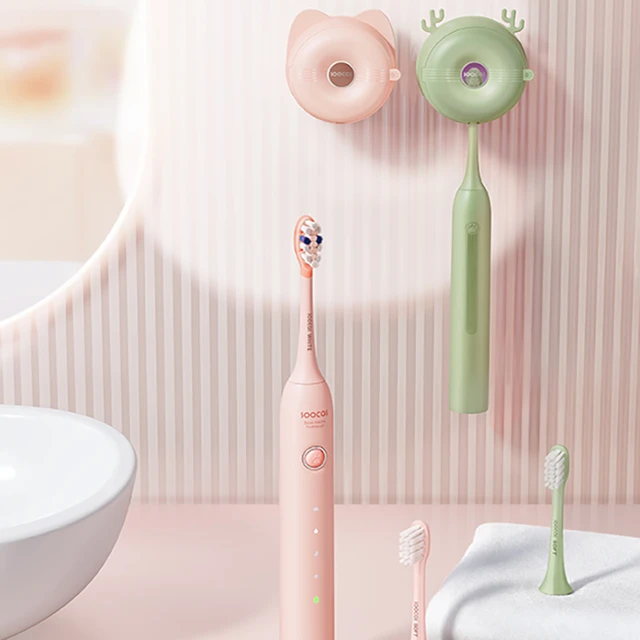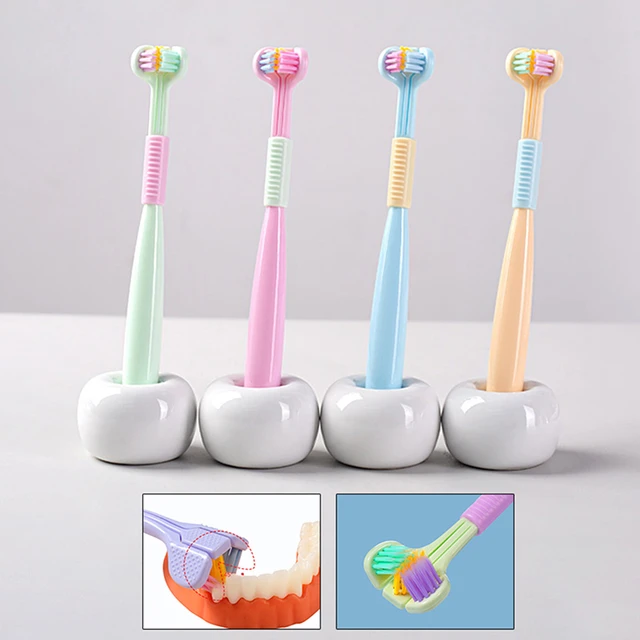Introduction to Toothbrush Replacement Guidelines
Maintaining optimal oral health includes knowing when to replace your toothbrush. A toothbrush is a crucial tool in your dental hygiene routine, but it doesn’t last forever. Over time, bristles deteriorate and can harbor harmful bacteria, making it less effective and potentially risky. Experts, including those from the American Dental Association (ADA), suggest a replacement cycle for toothbrushes to keep your mouth clean and healthy.
The general rule of thumb is to swap out your toothbrush every three to four months. However, there are certain situations when you should replace your toothbrush more frequently. These include instances after illness or if you notice the bristles fraying or becoming misshapen sooner. Proper toothbrush care between replacements is also essential in prolonging the life and effectiveness of your toothbrush. Stick around as we dive deeper into each aspect of toothbrush maintenance and replacement. This information will empower you to make informed decisions about your oral health tools.

Recognizing the Signs of Toothbrush Wear
Recognizing when your toothbrush is past its prime is key to oral health. Here are telltale signs:
Bristles That Are Frayed or Flattened
If your toothbrush bristles look frayed or matted down, they won’t clean teeth well.
Discoloration of Bristles
Bristles that appear discolored may indicate mold or bacteria growth.
Bristles Losing Stiffness
When bristles lose their firmness, they can’t remove plaque effectively.
Changes in Brushing Effectiveness
If your teeth feel less clean after brushing, consider a toothbrush change.
Regular scrutiny of your toothbrush’s condition can prevent oral hygiene setbacks. Swap out your toothbrush when you see these signs to maintain optimal dental health.
The Importance of Replacing Your Toothbrush Regularly
Regular replacement of your toothbrush is vital for maintaining oral hygiene. Let’s explore the reasons:
Prevent Bacteria Build-up
The longer you use a toothbrush, the more bacteria accumulate. Experts urge a new toothbrush every three to four months to limit this growth.
Ensure Effective Cleaning
Worn bristles clean less well over time. A new brush ensures teeth and gums stay free from harmful plaque.
Guard Against Wear and Tear
Brushing too hard or too often can damage bristles. Fresh bristles avoid this problem and safeguard your mouth health.
Reduce Risk of Infection
After sickness, your toothbrush can keep germs. Swap it out to keep illnesses from returning. This step helps stop infection spread in your home.
Keep Up Best Brushing Techniques
A new toothbrush allows for correct brushing pressure and technique. This can prevent damage to teeth and gums.
Remembering to replace your toothbrush regularly promotes a healthier mouth. Pay attention to the signs of aging on your brush and stick to the recommended guidelines for replacement.
How to Properly Care for Your Toothbrush
Proper care extends your toothbrush’s life and ensures oral health. Follow these simple steps:
Rinse After Every Use
Always clean your toothbrush under running water after brushing.
Allow it to Air-dry
Set your toothbrush upright and allow it to air-dry in an open space.
Avoid Toothbrush Covers for Daily Use
Skip the toothbrush cover; it traps moisture and breeds bacteria.
Separate from Other Brushes
Store your toothbrush in a holder away from others to prevent cross-contamination.
Traveling with Your Toothbrush
When traveling, protect the head with a case, but remove it once you reach your destination.
Never share your toothbrush. It spreads germs and increases the risk of infection.
Keep It Away from Contaminants
Place your toothbrush away from the toilet and sink to avoid airborne particles.
Caring for your toothbrush doesn’t have to be complex. Simple steps like these keep your brush clean and your mouth healthy. Remember, even with the best care, replace your toothbrush regularly, as recommended.
 The Impact of Toothbrush Condition on Oral Health
The Impact of Toothbrush Condition on Oral Health
The state of your toothbrush plays a major part in oral health. A brush that’s in poor condition can’t clean teeth as it should. As a result, staying with an old toothbrush might affect your mouth more than you think.
It’s Not Just About Bristles
When bristles fray, they lose ability to sweep away plaque. This means that even if you brush regularly, your dental hygiene suffers. Unremoved plaque can lead to tooth decay and gum disease.
Bacteria and Your Toothbrush
Old toothbrushes may hold bacteria and mold. These can transfer to your mouth with every brush stroke. Regular replacement of your toothbrush cuts down on these risks.
Effectiveness in Cleaning
The effectiveness of toothbrushes dwindles as the bristles wear out. This makes brushing less successful at preventing dental problems. A new toothbrush means a more effective clean.
How an Old Toothbrush Affects You
A worn toothbrush might cause damage to gums or tooth enamel. Brushing with old bristles could be too harsh. This could also lead to sensitive gums and teeth.
Keeping your toothbrush in good shape is vital. It ensures proper cleaning and helps maintain your oral health. Remember to replace your toothbrush or brush head every three to four months. Also, after an illness, do consider an immediate change. This helps keep your teeth and gums in top condition.
When to Swap Out Your Electric Toothbrush Head
Replacing your electric toothbrush head regularly ensures continued oral health and effectiveness of your brushing routine. Here’s what you need to know about the lifespan and replacement of electric toothbrush heads.
Understand the Replacement Timeline
Electric toothbrush manufacturers often recommend changing the brush head every three months. Pay attention to the bristles. Once they start showing signs of wear, it’s time for a new head.
Look for Visible Signs of Wear
Frayed or splayed bristles mean it’s definitely time to replace the head. Don’t wait till the bristles lose their color; by that time, it has been too long.
Consider Usage and Health Events
Brush twice a day? Your brush head might wear out faster. Been sick recently? Change the head to avoid re-infecting yourself.
Check for Special Features
Some electric toothbrush heads come with color-changing bristles or reminder bristles. When the color fades significantly, that’s your cue to replace it.
Electric vs. Manual Guidelines
While similar to manuals, electric toothbrush heads often show wear differently. They might not fan out as much but look closely for changes in bristle texture.
Following these tips, and staying aware of how often you should replace your toothbrush head, will help maintain the effectiveness of your electric toothbrush.
Special Considerations: Post-Illness and Children’s Toothbrushes
Taking care of your toothbrush is even more critical after an illness. Post-sickness, germs can linger on the bristles. To prevent reinfection, it’s best to start fresh with a new toothbrush. This is a crucial step to stop spreading those germs to family members.
For children, toothbrushes may need more frequent replacement. Kids often chew on their brushes, leading to faster wear and tear. They also may not be as diligent about keeping their brushes clean. Replace your child’s toothbrush more often to ensure they are brushing with effective bristles.
Some quick tips for adults and kids alike:
- Replace toothbrushes after any illness to avoid germs.
- Look for signs of wear, like splayed bristles or discoloration.
- For children, check toothbrushes monthly for damage.
- Educate children on proper toothbrush care to extend life.
Remember, a clean and intact toothbrush is key to maintaining oral health for everyone in the family.
 Choosing a New Toothbrush: Tips and Recommendations
Choosing a New Toothbrush: Tips and Recommendations
Selecting a fresh toothbrush is crucial for effective cleaning. Here are suggestions to keep in mind:
Consider Bristle Strength
Choose soft bristles to protect enamel and gums. Skip hard bristles to avoid damage.
Pick the Right Size
Opt for a toothbrush head that covers one to two teeth at once. Larger heads may miss spots.
Manual vs. Electric
Assess your needs. Manual brushes work well. Electric ones may offer more cleaning power.
Look for ADA Approval
Seek out toothbrushes with the American Dental Association (ADA) Seal of Acceptance.
Contemplate the Handle
Select a handle that is comfortable and easy to grip. It should not slip when wet.
Keep Budget in Mind
Don’t overspend. While quality matters, expensive does not always mean better.
Children’s Toothbrushes
For kids, opt for fun designs and smaller heads. This encourages them to brush.
Replacement Indicators
Some toothbrushes have bristles that change color to signal when it’s replacement time.
Consult Your Dentist
Ask your dentist for personalized toothbrush recommendations during check-ups.
Choosing carefully extends the life of your toothbrush and enhances your dental routine. Always keep an eye on how often you should replace your toothbrush and maintain good oral hygiene practices.
